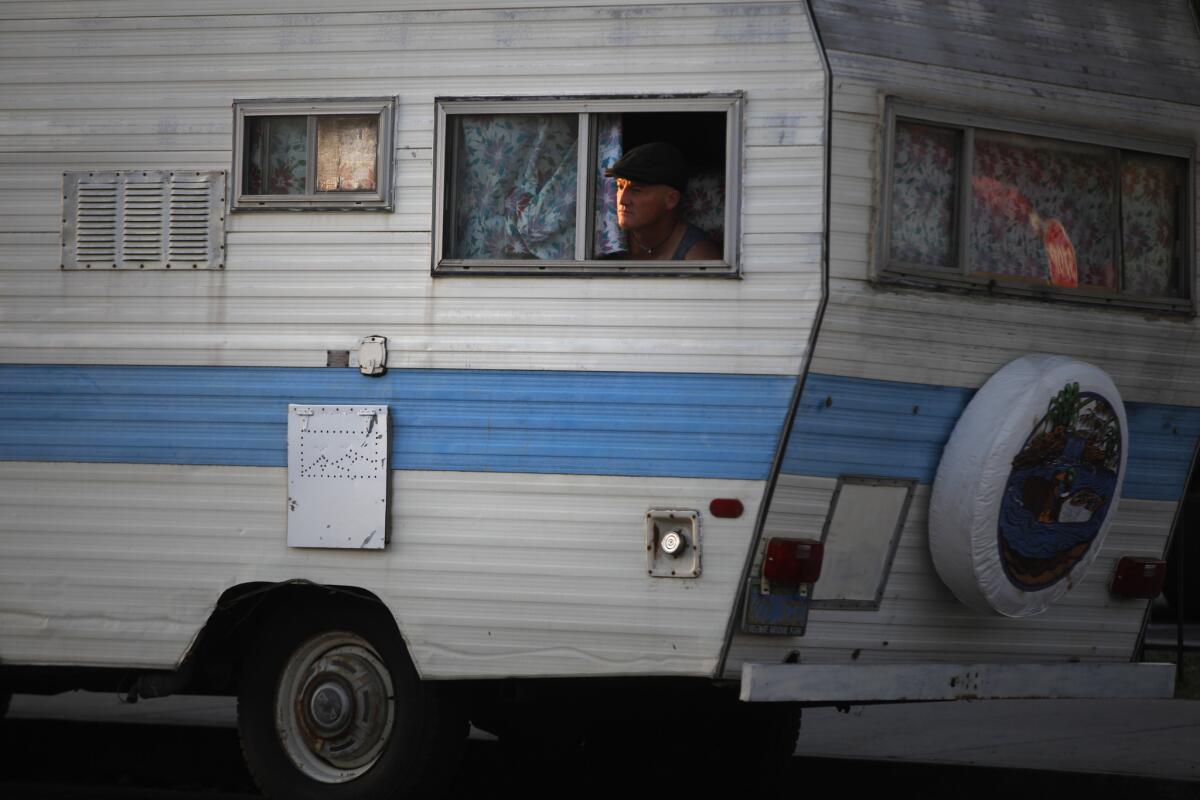Editorial: Homeless and living in a car: What rules should L.A. apply?

A man who lives in his RV in Venice in 2013.
- Share via
The hundreds of homeless people who live in their vehicles, parked on city streets, may not be as visible as those camped on city sidewalks, but they still pose potential public health and nuisance problems for neighborhoods. Los Angeles officials have yet to figure out a fair yet practical solution that addresses community concerns without criminalizing a last-ditch option for some of the city’s neediest people. In fact, the city had a ban on homeless people living in their cars, but last year, the U.S. 9th Circuit Court of Appeals struck it down as unconstitutionally vague.
Los Angeles City Atty. Mike Feuer has proposed two approaches to this issue for the City Council to consider. One draft ordinance would simply reinstitute the ban on sleeping in one’s car overnight, with certain tweaks to make the law constitutional. But even if it passes legal muster, it won’t solve anything. It will shoo cars from one neighborhood to another and bar an activity that people are engaging in only because they have no other home to go to.
Feuer’s alternative ordinance would allow people living in their cars to park on designated streets in nonresidential areas, but only if they are receiving homeless outreach services. This carrot-and-stick approach seems like a promising and humane way to accommodate homeless people in vehicles, to keep them out of residential areas where they clash with homeowners and to induce them to participate in service programs.
Several years ago, there were about 250 people living in RVs for extended periods in Venice, prompting complaints from residents and leading to a spate of residential street restrictions on overnight parking of oversized vehicles. The designated parking ordinance would remove that friction by directing car dwellers to spaces on streets in commercial and industrial areas.
However, the ordinance, as proposed, needs tailoring. How many cars per block would be allowed? Wouldn’t the city need to offer access to toilets — either in nearby buildings or by setting up port-a-potties? And shouldn’t vehicle dwellers be allowed to stay only overnight and be required to drive away in the morning? Are there ways to mitigate concerns of businesses in these neighborhoods?
The city should also consider renting parking lots that are empty overnight from businesses. Or it might ask not-for-profit groups to open their lots overnight in exchange for port-a-potties and security services. Some churches and temples in Los Angeles are looking into ways to offer overnight parking to small numbers of homeless people in vehicles, as some nonprofits already do in Santa Barbara.
The goal is to give people the support they need to get out of their cars and into their own housing. But since that won’t happen overnight, people must find a safe place to park.
Follow the Opinion section on Twitter @latimesopinion and Facebook
More to Read
Sign up for Essential California
The most important California stories and recommendations in your inbox every morning.
You may occasionally receive promotional content from the Los Angeles Times.










